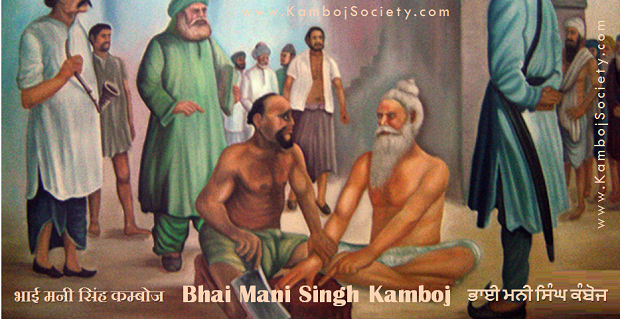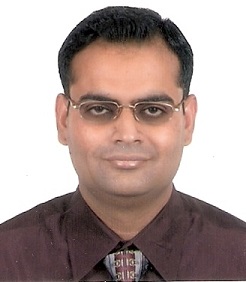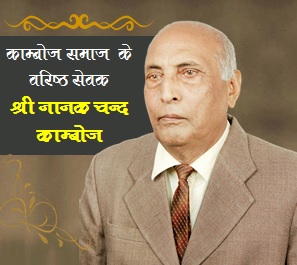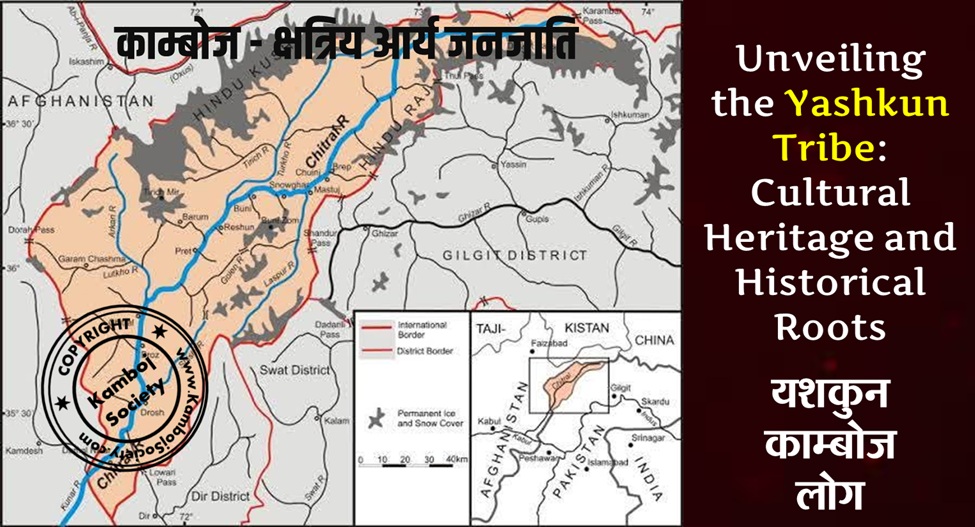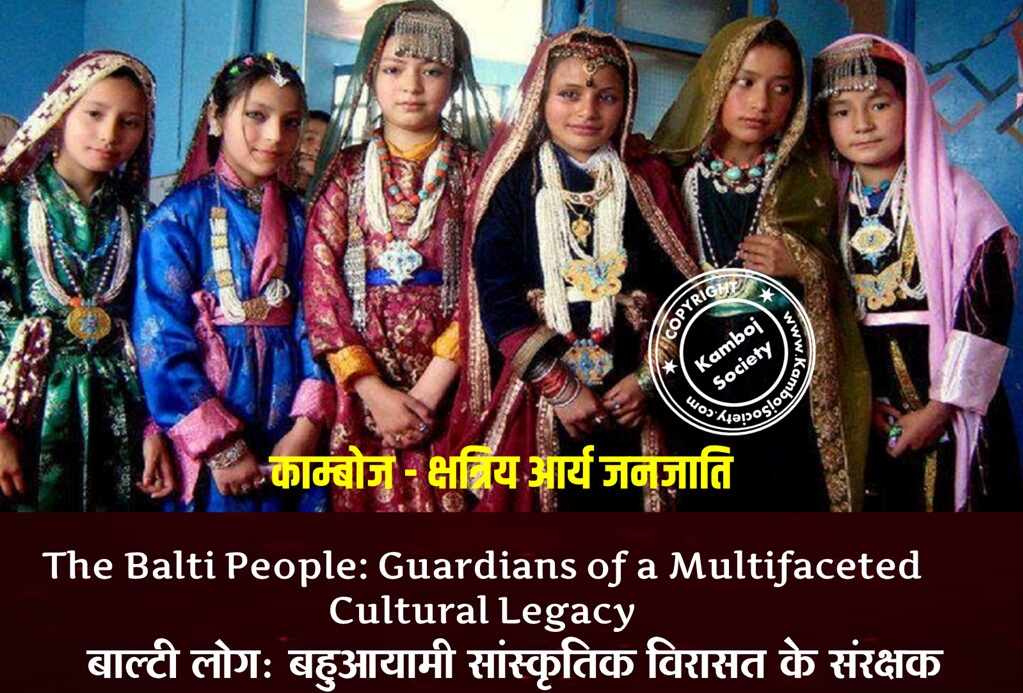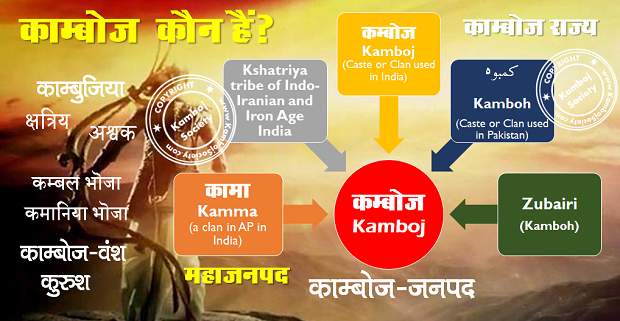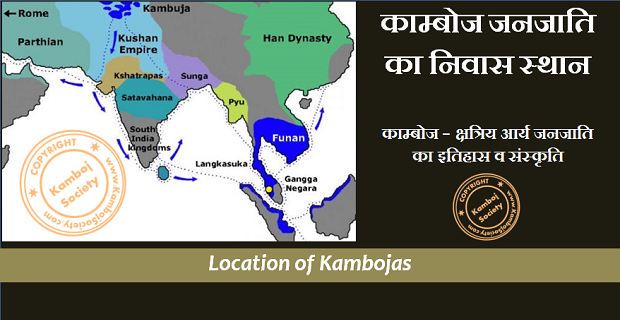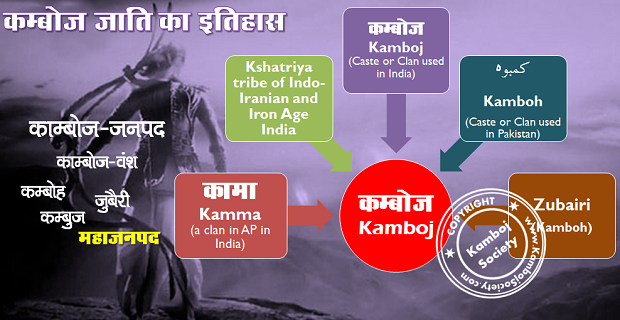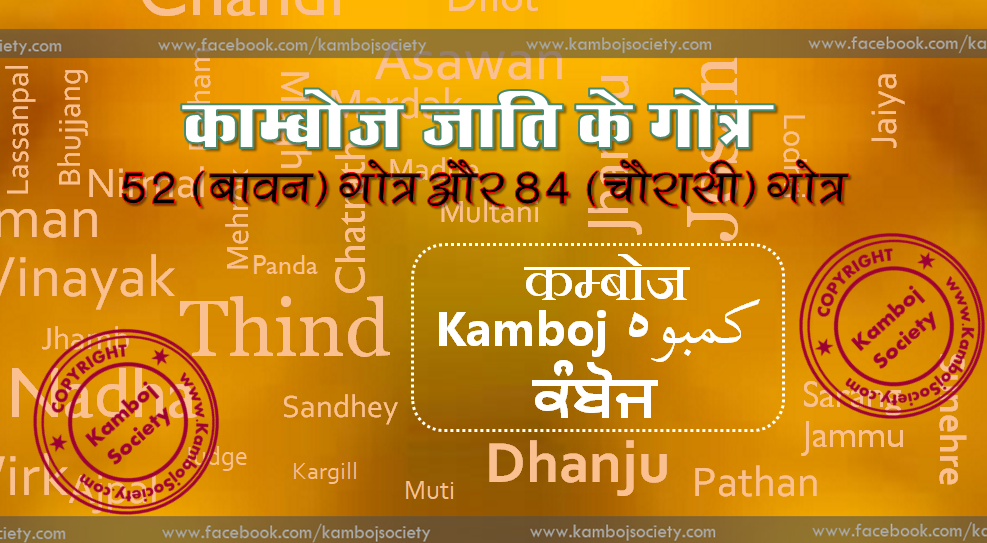Bhai Mani Singh was a great Sikh personality of eighteenth century and occupies a very esteemed position in Sikh history. He assumed the control and steered the course of the Sikh destiny at a very critical stage in their history. A great scholar, a devoted Sikh and a courageous leader, Bhai Sahib willingly laid down his own life to uphold the dignity of the Sikh nation and religion. Bhai Mani Singh is a Martyr par excellence in Sikh history and his name has become an integral part of daily Sikh Ardas (prayer).
Ethinicity
Bhai Mani Singh Shaheed came, according to Bhai Kesar Singh ji Chhibbar [1], his contemporary, of a Kamboj family, but according to Giani Gian Singh Dullat [1822-1921], author of the Panth Parkash, of a Dullat Jatt family of Kamboval village (now extinct), near Sunam [2] in Sangrur district of the Punjab. Since Giani Gian Singh himself belonged to Dullat lineage, hence he has claimed Bhai Mani Singh as one of his Dullat ancestors. [3]On critical review of Giani's own family history, its chronology and other relevant issues in the light of available physical evidence, it is virtually impossible to accept Giani Gian Singh's claim on Bhai Mani Singh Shaheed. [4]. Even in the well-known classic Punjabi Mahankosh, the distinguished Sikh scholar of 20th century, Bhai Kahn Singh Nabhha, clarifies that the Dullat Jatt ethnicity of Bhai Mani Singh is being pressed forward solely and solely by Giani Gian Singh alone. Numerous other scholars/writers, on the other hand, invest Bhai Sahib with a Kamboj ethnicity
[5]. According to Giani Garja Singh, no person by the name Mani Singh has ever been in the ancestral line of Giani Gian Singh [6].Since Bhai Kesar Singh Chhibber, a contemporary of Bhai Mani Singh [7], claims to have personally met and seen the latter several times during his early age [8], he therefore, is a very reliable eyewitness on Bhai Mani Singh's family particulars. Moreover, being a non-Kamboj himself, Bhai Chhibber can be assumed to be absolutely non-committed with regard to his write-up on Bhai Mani Singh's ethnic background. In contrast, Giani Gian Singh ji Dullat is far removed in time by over a century and half from Bhai Sahib ji. And he has also an understandable motivation for investing Bhai Mani Singh ji with a Dullat Jatt lineage and thus connecting him with his own (Dullat) family to claim credit and honor for his family. Hence, his claim or evidence on Bhai Mani Singh's ethnicity |ethnic identity apparently becomes much weaker and dubious as compared to the evidence of a non-committed eyewitness like Bhai Kesar Singh ji Chhibber.
Koir Singh Kalal, another contemporary of Bhai Mani Singh, also lends support to Bhai Kesar Singh Chhibber's evidence on the Kamboj lineage of Bhai Mani Singh [9].
Based on Shaheed Bilaas by Kavi Seva Singh, Giani Garja Singh ji (a Punwar Vanjara Rajput) has claimed that Bhai Mani Singh Shaheed belonged to Punwar (Vanjara) Rajput lineage and was born on March 10, 1644 AD [10] in village Alipore in Multan, now Pakistan. Shaheed Bilaas was originally written in Bhattakhri in 1803 AD and is claimed to be based on Bhat Vahis. It is stated to have been transliterated into Gurmukhi draft by Chhajju Singh Bhat in 1870 AD which curiously remained unpublished over 90 years until Giani Garja Singh ji edited and published it with his own comments in 1961 AD. It is notable that inspite of persistent demands, the original drafts of Shaheed Bilaas by Sewa Singh in Bhattakhri (1803 AD) as well as its transliterated version in Gurmukhi script (1870 AD) have not been presented by Giani Garja Singh or his supporters to the Scholars at Punjabi University Patiala for the review and examination of their authenticity, genuineness and contemporariness. Giani Garja Singh's claim on Bhai Mani Singh and Bhai Dayala Ji has recently been rejected by scholars of note from Punjabi University Patiala who call in question the authenticity of the referential sources cited by Giani Garja Singh to prove the Rajput lineage of Bhai Mani Singh Shaheed. These sources are yet to receive the rigourous and critical review from the scholar community for their authenticity and trustworthiness [11] . Scholars assert that, in order to seek favors and to please his patron Bhai Sangat Singh who was a great Grand son of Bhai Mani Ram Rajput
[22] , Kavi Sewa Singh Bhat has wrongly transmuted Bhai Mani Ram Dewan (Rajput) into Dharama Acharya, Bhai Mani Singh Shaheed [12].Dr G. S. Nayer, Member Editorial Board, Punjabi University Patiala, also asserts that there is no real reason to reject the evidence of Bhai Kesar Singh Chhibber on Bhai Mani Singh as coming of Kamboj lineage [13].
Prof Gurmukh Singh Waraich of Patiala University has also rejected Garja Singh's unattested and uncritiqued referential sources about Bhai Mani Singh Shaheed as being unscientific. In his research article on the identity of Bhai Mani Singh, prof Waraich asserts that Bhai Mani Singh Shaheed belonged to the Kamboj lineage [14].
According to Sher Singh Sher (a Non Kamboj scholar), Bhai Mani Singh Shaheed was a paternal nephew (i.e Bhateeja) of Bhai Dayala Ji and belonged to the Kamboh |Kambo caste.[15]
Latest, a well known Punjabi writer and historian, S. Kirpal Singh has written a research book on Bhai Mani Singh Shaheed which was published in 2004. The book is in response to Shaheed Bilaas of Giani Garja Singh and it treats of the subject from the very fundamentals, and establishes that it was Bhai Mani Singh Kamboh (Kamboj) of village Kambohwal (now Longowal) and not Bhai Mani Ram Dewan (a Punwar Rajput) of village Alipore, Multan, who was martyred by being cut piece by piece at Lahore. [16]
[17].According to Karam Singh historian, in the wake of Anandpore disaster when Bhai Mani Singh had escorted the wives (Mehils) of Tenth Guru ji to Delhi, they were also accompanied by some devoted Kamboh families who had been in the service of Gurughar. It appears highly likely that these families originally belonged to Kambohwal and had moved to Anandpur in the shelter of Gurughar and had permanently stayed there in the service of ninth Guru ji. Bhai Dayala Ji |Bhai Dayala ji and Bhai Mani Singh, to all probability, belonged to these devoted families of the Kamboh lineage. Karam Singh Historian had recommended further research on these Kamboj families.
Early life
There is some uncertainity about the exact year of birth of Bhai Mani Singh. Giani Thakur Singh writes his year of birth as 1672 AD while some other writers put it at 1670 AD. But according to Sohan Singh Seetal, a well known Sikh historian, Bhai Mani Singh was born in 1664 AD. Principle Satbir Singh wrote the year of birth as 1672 in his 1970 edition but changed it to 1662 AD in the later editions of "Sada Itihaas" (See: Sada Itihaas, 1998, p 154, Principle Satbir Singh). According to Dr Santokh Singh also, Bhai Mani Singh was born in 1662 AD (The Guru's Word). These earlier dates are indirectly based on Giani Giani Singh's references to ninth Guru's visit to village Akoi/Malwa in year 1665 AD. Based on critical analysis of ancient Sikh writings, it appears certain that Bhai Mani Singh was born no later than 1665 AD, hence years given by Giani Sohan Singh Seetal or Principal Satbir Singh/Dr Santokh Singh etc appear more closer to truth.
According to Shaheed Bilaas edited and published by Giani Garja Singh ji in 1961, the birth date of Bhai Mani Ram (alias Bhai Mani Singh Rajput) of Alipore, Multan is 1644 AD.
In the shelter of the Guru
Bhai Mani Singh is said to have been brought in the early years of his childhood to the presence of Guru Tegh Bahadur at Anandpur. He was approximately of the same age as the Guru's own son, Gobind Rai. Both grew up together - Gobind Rai [Das] and Mani Ram were the names they went by in those pre-Khalsa days. Mani Singh remained in his company even after he had ascended the religious seat as Guru. Mani Singh accompanied the Guru to the seclusion of Paonta where Guru Gobind Singh spent some three years exclusively given to literary work. Bhai Ji was asked to stay back with Gobind Rai when Guru Teg Bahadur Sahib proceeded to Delhi to save the Hindus from being forcibly converted to Islam. Bhai Ji became a great soldier while serving the Tenth Guru, Guru Gobind Singh. He accompanied Guru Ji when the Guru visited Nahan, at the invitation of Hill Chief Raja Medni Prakash.
Bhai Ji fought bravely in battle of Bhangani in the year 1688 A.D., when Hill Chiefs mounted a combined attack on Guru Gobind Singh. Bhai Hari Chand, one of the brothers of Mani Singh attained martyrdom in this battle. Bhai Mani Singh was named Dewan of Guru's court after the battle of Nadaun in which he showed his quality of a fearless and brave warrior.
Bhai Mani Singh took Amrit at the hands of Guru Gobind Singh Ji on the day of the creation of Khalsa (Baisakhi in 1699 A.D). After taking amrit paan, his name was changed from Manik Dass to Mani Singh.
When Guru Gobind Singh Ji left Anandpur on the night of December 20, 1704, his family got separated at river Sirsa in the confusion created by the Mughal attack. Bhai Mani Singh took Mata Sundri Ji and Mata Sahib Devan to Delhi via Ambala.
In 1706, Bhai Mani Singh escorted Guru Sahib's wives to Talwandi Sabo where the Guru was staying. At Damdama Sahib (Sabo Ki Talwandi), Bhai Mani Singh wrote Demdami copy of Adi Guru Granth Sahib (in its present form) under instructions from Sri Guru Gobind Singh Sahib. The same volume of Sri Guru Granth Sahib was later bestowed Guruship at Nanded by the Tenth master.
When Guru Sahib left Agra with Emperor Bahadur Shah for Nander in 1707, Mata Sahib Devan and Bhai Mani Singh accompanied him. When Guru Gobind Singh proceeded to South India, Bhai Mani Singh escorted Mata Sahib Devan Ji back to Delhi where she lived with Mata Sundri Ji for the rest of her life.After Baba Banda Singh Bahadur attained martyrdom in Delhi, some among the Sikhs started worshipping him as a Guru which was against the orders of Guru Gobind Singh, who had bestowed Guruship on Sri Guru Granth Sahib. They even changed the Sikh salutation to Fateh Darshan from "Waheguru Ji Ka Khalsa, Waheguru Ji Ki Fateh." His followers, led by Bhai Mahant Singh Khemkaran, proceeded to wards Amritsar to forcibly take over the management of Harmandir Sahib. On the other hand, staunch followers of Sikh tenets, as specified by Guru Gobind Singh led by Baba Kahan Singh, son of Baba Binod Singh (an advisor of Baba Banda Singh appointed by Guru Gobind Singh) had in advance obtained permission from Mughal Rulers for holding a special congregation at Harmandir Sahib on the occassion of Diwali.
Sikhs of both sides came in large numbers to Harmandir Sahib, Amritsar to claim the right of its management and were prepared to fight it out, but somehow on the intervention of some wise counsels, the occasion passed off peacefully although the government of the time wanted blood shed between the two Sikh groups to take place.However, these danger signals prompted some well meaning Sikhs to approach Mata Sunder Kaur Ji at Delhi to resolve the dispute between Tat Khalsa and Bandai Khalsa military factions of the Sikhs. Mata Sunder Kaur despatched Bhai Mani Singh for the purpose of appointing him Granthi of Harmandir Sahib for proper management of the Shrine and sent him to Amritsar with Mama Kirpal Singh (Chand), the maternal uncle of Guru Gobind Singh Ji. After analysing reasons for the dispute, Bhai Mani Singh invited Sikhs of at shades of opinion of Khalsa, gathered on the occassion of birth of the Khalsa on Baisakhi Day. While Baba Kahan Singh, Jathedar of Tat Khalsa captured, Akal Bunga, Bhai Mahant Singh of Bandai Khalsa captured. Jhanda Bunga in the premises of Harmandir Sahib. So much so that Bhai Mahant Singh went to the extent of coming right upto the entry point to Harmandir Sahib riding a chariot sitting on cushions.
In 1721, Bhai Mani Singh intervened and suggested a novel method for settling the dispute to which both sides agreed. On the Baisakhi day Bhai Mani Singh took two pieces of plain paper. He wrote “Waheguru Ji Ki Fateh” on one and “Fateh Darshan” on the other. Folding these papers separately, he dropped both these papers in the sacred sarovar (Water Pool) of Harmandir Sahib. It was agreed by the two parties that the party whose folded paper floated back first would manage the shrine. For a while the both papers remained under water. Later one of these surfaced. The same was taken out and read by Bhai Mani Singh. It was revealed that the words “Waheguru Ji Ki Fateh” representing Tat Khalsa were written on this. Thus, Tat Khalsa won the right to manage Harmandir Sahib and bloodshed was avoided among Sikhs. Thus dispute was peacefully settled and he restored peace among the Khalsa and put the affairs of Harimandir Sahib in order. Thereafter, Bhai Mani Singh decided and announced that Sikhs gather at Harmandir Sahib twice a year on the occassion of Baisakhi and Diwali.
The Mughal Empire
In 1735 A.D., Zakria Khan, the Governor of Lahore, ordered village headmen and landlords to finish Sikhs of their areas. He also appointed Diwan Lakhpat Rai, an enemy of the Sikhs, the administrator of Amfitsar and Qazi Abdul Razak as the police chief. One day the Governor asked them, 'What is the reason that no matter what the number of Sikhs we kill more are created ?" The Qazi replied, "Their Guru had put the elixir of life in the pool at Harmandir Sahib. Whosoever bathes in that pool, gains eternal life." Hearing this, the Governor ordered the filling up of the pool with sand and turned Bhai Mani Singh out from the service of Harmandir Sahib.
Having been turned out from Harmandir Sahib, Bhai Mani Singh took up residence at the Sultan Wind's well. one evening Qazi Abdul Razak came to Bhai Mani Singh and said, "My children are very ill. Medicines of local physicians and doctors are having no effect. Children wake up with nightmares." Bhai Mani Singh went with him to his house. He sprinkled water from the pool of Harmandir Sahib over the children and said to them, "Be not afraid during the night." As the Lord would have it, the children stopped having nightmares. Qazi Abdul Razak stopped silting up the pool.
By 1737, the Mughal government of Lahore had strictly prohibited the Sikhs to visit Amritsar and bathe in the holy tank. To overcome this restriction, Bhai Mani Singh applied to Governor Zakaria Khan for permission to hold the Diwali festival at Harimandir Sahib. With the help of the Qazi Abdul Razak, Bhai Mani Singh got permission from the Governor to allow Sikhs to have free access to Harmandir Sahib for ten days on the occasion of Diwali. The permission was granted for a tribute of Rs.5,000. He hoped that he would be able to pay the sum out of the offerings to be made by the Sikhs who were invited to come. He wanted the Sikhs to gather in large numbers to plan their future strategy and to devise ways for infusing hish spirits and unity among Sikhs.
Zakaria Khan had wicked intentions while granting permission for the celebration. He had planned to encircle, attack and kill large number of unsuspecting Sikhs when they were absorbed in celebrations.
Zakariya Khan, under the pretext of keeping order, mobilized and deployed large contingents of army units around Amritsar under the command of Dewan Lakhpat Rai. It was to march towards the city just on the day of the festival so that the Sikhs might be frightened and dispersed.Sensing foul intentions of rulers, Bhai Mani Singh sent out messengers to all concerned informing Sikhs of the impending danger and requesting them not to come to Amritsar on the occasion of Diwali. Inspite of warnings sent out by Bhai Mani Singh, a fairly large number of Sikhs arrived at Hanmandir Sahib. Lakhpat Rai mounted a surprise attack and killed a large number of Sikhs while they were bathing in the sacred sarover. Bhai Mani Singh sent a note of protest against this unproved killing of Sikhs to Zakaria Khan.
Execution
Bhai Mani Singh was arrested for not paying the stipulated sum. He was asked by the Qazi to embrace Islam or else face death. Bhai Mani Singh stoutly refused to barter his religion and boldly opted for death. By orders of Zakarya Khan, Bhai Mani Singh was executed at Nakhas, Lahore in December, 1737 AD. The Nakhas has ever since been known as Shaheed Ganj - the place of martyrdom. [21]This was a gruesome execution in which Bhai Mani Singh's body was chopped to pieces joint by joint starting from the extremities interior-wards. The Martyrdom greatly inflamed the passions of the Sikhs. They pledged to uproot the evil forces of the Mughals sooner than later.As a scholar
Bhai Mani Singh acted as scribe when Guru Gobind Singh Ji compiled Sri Guru Granth Sahib from his sacred tongue.Bhai Sahib is also stated to have transcribed many copies of the sacred Sikh scriptures which were sent to different preaching centers in India. He also taught the reading of Gurbani and its philosophy to the Sikhs.
Bhai Sahib was responsible for collecting the Bani (holi writings) of Guru Gobind Singh Ji and compiling it in the form of Dasam Granth. Besides this, Bhai Sahib also authored several invaluable books like Japji Sahib Da Garb Ganjni Teeka (teeka means translation and explanation of a work), Janam Sakhi Guru Nanak Dev ji, Sikhan Di Bhagatmala etc. He also prepared a new version of Sri Guru Granth Sahib in which he took out Guru-bani from the Ragas and rearranged/systematised it for each Guru separately for the convenience of Sikh Sangat. He did a similar thing with the Bhagat-bani also. It is stated that the segregation of Bani thus was disapproved by the Sikh-Sagat in general and Bhai Sahib was reprimanded for the sacrilege accordingly.
In his capacity as a Granthi of Darbar Sahib, Bhai Singh is also stated to have composed the Ardaas (Sikh Prayer) in its current format. He also started the tradition of adding the deeds of the Gursikhs with the prayer
Celebate life
Bhai Mani Singh remained unmarried all his life. This is very well attested by the ancient Sikh scholar, Bhai Rattan Singh Bhangu
[18]. Bhai Rattan Singh Bhangu further attests that Bhai Mani Singh was ''Pujarion sir baddo pujaree'' [19] i.e ''"a foremost worshipper (at Harimandir)"'', which evidence pre-eminently projects the scholarly side of Bhai Mani Singh's personality[20]. But compared to this, Bhai Mani Ram Dewan (Rajput) of Giani Garja Singh's ''"Bhat & Panda Vahis"'' was married twice, is stated to have fathered ten sons and was more of a warrior bent of mind than scholar. How can a married man and a father of ten sons be called a celebate? This evidence proves that Grihasthi: ''Bhai Mani Ram Dewan'' (Rajput) of Alipore, Multan, was not the same as the ''Jati-Sati'' (i.e. celebate) ''Dharam-Acharya: Bhai Mani Singh Shaheed''.References
-
Panth Parkash, Second Edition, Lahore, p 271, Giani Gian Singh
-
Shaheed Bilaas, 1961, p 14, Giani Garja Singh; Bhai Mani Singh Shaheed, 2004, p 20-23, Kirpal Singh; also: Bhai Mani Singh and his caste, Dated Nov, 21, 1993, Dr Parkash Singh Jammuu, Punjabi University Patiala
-
human generations, which gives us about 54-55 years for one human generation. This number is really huge (55 years/per generation) and is absurd and virtually impossible. The average human generation is taken about 25 years by all noted scholars though it can extent upwards to 30 to 40 years under special circumstances. This single argument alone virtually negates Giani Gian Singh's claim on Bhai Mani Singh Shaheed whom he calls a Dullat Jatt --> It is important to know that Giani Gian Singh ji Dullat often goes on changing his own statements about the basic parameters of his own ancestors in different editions of his Panth Parkash. And there are numerous inconsistencies in his own ancestral family particulars. This goes to prove that Giani Gian Singh ji is not sure of what he is writing about. This adds enough elements of doubt to his professed claim on the actual Bhai Mani Singn Shaheed. [https://en.wikipedia.org/wiki/Bhai_Dayala_Ji#References] Another important point here: Giani Gian Singh Dullat was born in 1822 AD. Bhai Nagahya Dullat was the elder brother of Bhai Mani Singh Dullat. If Bhai Mani Singh was born around 1662-1665 AD, then Bhai Nagahya Dullat must have been born, at least around 1660-1662 AD. Thus, there is an intervening period of over 160 years between the "year of birth" of Bhai Nagahya Dullat (great grand father) and that of Giani Gian Singh Dullat (great grand son) if we accept Giani Gian Singh's claim on Bhai Mani Singh. This involves THREE human generations, which gives us about 54-55 years for one human generation. This number is prepostrously huge (55 years/per generation) and virtually impossible. Based on the numerous generational data worldwide, the average human generation is often taken to be about 25 (i.e. 20 to 30) years by all scholars though it may also extend upwards to as much as 35 or 40 years under special circumstances only. It is extremely important to note that if only ONE of these THREE generations (55 years each) of Giani Gian Singh's family from Naghahya (great grand father) to Giani Gian Singh (great grand son) happens to be of the usual length of 30 years (for which there is an extremely high probability), the average for the remaining TWO generations would then become about 68 years!. This number is utterly absurd and unacceptable! This single argument alone virtually negates Giani Gian Singh's claims on Bhai Mani Singh Shaheed whom he calls Dullat Jatt from his lineage
-
Encyclopaedia of Sikh Literature, Mahan Kosh, 1974, foot note, p 951
-
On carefully reading the Bansawalinama, it becomes known that Bhai Kesar Singh Chibber was born in 1699. This is because Chhibber himself attests that at the time of writing of Bansawalinama, he was of 70 years old. e.g Sattar baras sodh main keeti, taan ih katha sunai: (Bansawalinama Charan 14, verse 625). It is notable that the Bansawalinma was written in 1769 AD. Bhai Mani Singh assumed control of Harimandir as its Granthi in 1721 and stayed in that capacity till his martyrdom in 1737. Bhai Kesar Singh Chhibber's own father Bhai Gurbaksh Singh was working as Daroga of Harimandir Sahib and Bhai Kesar Singh Chhibber was also staying with him at Amritsar. Therefore, Bhai Kesar Singh Chhibber who lived close to Bhai Mani Singh after his appointment as Granthi of Harimandir in 1621 AD, must have naturally become very familiar with Bhai Mani Singh. Bhai Kesar Singh Chhibber was, therefore, in very good position to collect information and make correct judgement about Bhai Mani Singh and his ethnic particulars. He, therefore, correctly and unambiguously states that Bhai Mani Singh Sahib belonged to Kamboj lineage (e.g: Ih Granth Avtar Lila da jo hai se, Bhai Mani Singh Musadee, jaati (caste) Kamboh horan tyaar karvayaa; OR: Tab Bhai Mani Singh jaati (caste) Kamboh kahiye, so aan miley jin ke sam Sikh koi aisa Guru ka nahiye etc etc : see Charan 10th, Bansawlinama, Bhai Kesar Singh Chhibber ) and also expressly states that Bhai Sahib ji was martyred by being chopped piece by piece (See: Bansawlinama Charan 10).
-
Koir Singh Gurbilaas, Patsahi 10, (Ed) Shamsher Singh Ashok, Punjabi University Patiala, 1986, p 294-295. See Verses 204-209; Shaheed Bhai Mani Singh, 2004, pp 91-94, Kirpal Singh (a research book), The Kambojas through the Ages, 2005, p pp 265-66.
-
Ancient Sikh tradition, deeply ingrained in the mind of Sikhs, however tell us that Tenth Guru ji and Bhai Mani Singh were approximately of the same age and were Bal-sakhas or childhood friends. This is also confirmed by Giani Gian Singh (e.g: Mania maat-pita kai sangai | Gayo huto guru paas nisangai || balk kai sang balak thaaso | ketak din Anandpur baaso || sahibjade sangai khelat | rehat ren-din Anand jhelat ||: Panth Parkash, Bhasha Vibhag, 1987, p 676). This tradition clearly teaches us that Bhai Mani Singh Rajput (birth 1644) was over 22 years older than Guru Gobind Singh ji (birth 1666 AD) and thus can not be said to be a balsakha or childhood friend of the latter.
-
op cit., p 95-96), Dr Harbans Singh; Shaheed Bhai Mani Singh (a reserch book), 2004, pp 37-98, S Kirpal Singh.
-
Identity of Bhai Mani Singh, Article, Published in Punjab History Conference, Twenty Second Session, March 25-27, 1988, part I, Proceedings, Punjabi University Patiala, 1989, pp 80-81; Kambojas Through the Ages, 2005, p 248-267; Bhai Mani Singh Shaheed, 2004, Kirpal Singh.
-
Identity of Bhai Mani Singh, Article, Published in Punjab History Conference, Twenty Second Session, March 25-27, 1988, part I, Proceedings, Punjabi University Patiala, 1989, p 80-81, Gurmukh Singh Waraich; also see: Kambojas Through the Ages, 2005, p 255
-
Glimpses of Sikhism and the Sikhs, 1982, p 207, Sher Singh Sher.
-
Bhai Mani Singh Shaheed, (research book), 2004, pp 37-95; See also: The Kambojas Through the Ages, 2005, pp 249-266
-
The author S Kirpal Singh rejects, one by one, the arguments put forward by Giani Garja Singh to pass on Bhai Mani Ram Bhai Mani Ram "Rajput" as the "scholar" and "Dharamacharya", Bhai Mani Singh Shaheed. Kirpal Singh especially visited Hardwar to personally review and verify the contents of the Panda Vahis relating to Garja Singh's family and reports that there are dubious entries as well as discrepancies in chronological order as well as indications of tempering of the "Panda Vahis" at Hardwar in respect of Giani Garja Singh's family. Kirpal Singh has further found that the Panda Vahis at Hardwar can very easily be got manipulated or tempered with through the Pandas by any one at any time, and are therefore, by no means a reliable and scientific source of correct information. Similar arguments also apply to the Bhat Vahi Multani Sindhi and others Vahis which Garja Singh or his supporters like Piara Singh Padam, Dr Piar Singh etc depend on to prove their case. This new information by S Kirpal Singh very much negates the claim of Garja Singh. S Kirpal Singh notes a clear-cut forging of the documentaion and evidence by Giani Garja Singh ji(Op cit., 2004, pp 37-98)
-
See: Prachin Panth Parkash, Rattan Singh Ghangu, Edited by Bhai Sahib Dr Veer Singh, 1998 edition, p 222
-
Mani Singh jo sant mahaan, Jati-Sati aur Gyani maan. Hathi tapi aur mat ko puro, sahansheel aur dil ko suro(See: Prachin Panth Parkash, 1998, p 222, Rattan Singh Bhangu).
-
Shaheed Bilaas of Giani Garja Singh (1961) states that Bhai Mani Singh (Rajput) was arrested after Diwali of 1733 AD and was executed on June 14, 1734 AD i.e about 8 months after his arrest following Dewali (See: Shaheed Bilaas, Bhai Mani Singh, 1961, p 93, Editor Giani Garja Singh) whereas all other ancient sources and oral Sikh traditions assert that Bhai Mani Singh was martyred shortly after his arrest following Dewali---hence his Martyrdom is said to have occured in the month of November or December according to other ancient sources. It must be remembered that the Mughal rulers of Punjab were noted for their quick executions of the Sikhs. It is highly improbable that they could ever have waited for eight months to execute Bhai Mani Singh after he was formally arrested and charged shortly following the Dewali. This does not make sense at all. This is another point in Shaheed Bilaas of Giani Garja Singh which conflicts with the traditionally accepted ancient Sikh sources. To all probability, Bhai Mani Ram alias Bhai Mani Singh Rajput of Alipore (born 1644) had died naturally of old age on June 14, 1734. He was already over 90 years on that date. His death was later confused with that of actual Bhai Mani Singh Shaheed by Kavi Sewa Singh Bhat simply to please his Patron, Bhai Sangat Singh, the great grand son of Bhai Mani Ram Rajput (See: The Encylopedia of Sikhism, Vol IV, 1998, p 95-96, (Ed) Dr Harbans Singh; Shaheed Bhai Mani Singh (a reserch book), 2004, pp 37-98, S Kirpal Singh).
-
Shaheed Bilaas, Bhai Mani Singh, 1961, p 93, (Ed) Giani Garja Singh.
Books and Articles
-
Ancient Bansawalinama, Charan 10, 13, 14, Bhai Kesar Singh ji Chhibber.
-
Panth Parkash, Giani Gian Singh ji.
-
Prachin Panth Parkash, (ed) Bhai Vir Singh, New Delhi Edition, p 222-223, Rattan Singh Bhangu.
-
Encylopedia of Sikhism, Prof Harbans Singh.
-
Encyclopaedia of Sikh Literature, Mahan Kosh, 1974, foot note, p 951.
-
Gurmat Sudhakar, Bhasha Vibhag, 1970, p 221, Bhai Kahn Singh Nabha.
-
Sri Guru Gobind Singh ji di Shabad Murti, p 38, Bhar Randhir Singh ji.
-
Bhai Mani Singh Shaheed and his Caste, Kamboj Chetna Manch 1993, p 86, Dr Parkash Singh.
-
Sidki Jeewan, Mani Singh Shaheed Da Jeewan Britaant, 1907, Giani Thakur Singh.
-
Jeewan Sandesh, (Itihaas Number), Giani Gurdit Singh ji.
-
Bhai Mani Singh, Bhasha Vibhag, 1961, p 85, Dr S. S. Kohli.
-
Sri Guru Gobind Singh ji de Darbari Rattan, 1994, p 251-252, Prof Piara Singh Padam.
-
Glimpses of Sikhism and the Sikhs, 1982, Sher Singh Sher.
-
Bansawalai Nama Das Patshahian ka, Bhai Kesar Singh Chhibber, Singh Brothers Amritsar, 1997, p 26, Editor Piara Singh Padam,
-
Kambojas Through the Ages, 2005, p 248-267; Bhai Mani Singh Shaheed, 2004, Kirpal Singh ji.
-
Punjab History Conference, Twenty Second Session, March 25-27, 1988, part I, Proceedings, Punjabi University Patiala, 1989, p 80, Dr G. S. Nayer Member Editorial Board, Punjabi University Patiala.
-
Identity of Bhai Mani Singh, Article, Published in Punjab History Conference, Twenty Second Session, March 25-27, 1988, part I, Proceedings, Punjabi University Patiala, 1989, p 80-81, Prof Gurmukh Singh.
-
Bhai Mani Singh Shaheed, (a research book), January 2004, Jullundur, K. S. Dardi.
-
These Kamboj People, 1979, K. S. Dardi.


